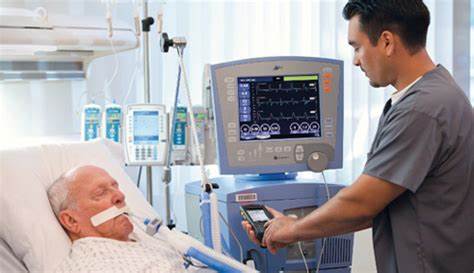ARDS require mechanical ventilation with the following goals:
mo elzouki • November 17, 2022
Clinical points in ARDS

The management of acute respiratory distress syndrome (ARDS) involves avoiding complications of mechanical ventilation by using lung protective strategies such as low tidal volume ventilation (LTVV). LTVV results in lower pulmonary pressures, decreasing the likelihood of over distending alveoli. In addition, it improves mortality in patients with ARDS.
Avoiding complications of mechanical ventilation by using lung-protective strategies such as low tidal volume ventilation (LTVV):
- LTVV (6 ml/kg of ideal body weight) decreases the likelihood of over distending alveoli and provoking barotrauma due to high plateau pressures (pressure applied to small airways and alveoli).
- LTVV improves mortality in patients with ARDS. In contrast, higher tidal volumes in ARDS may result in elevated pulmonary pressures due to the work of forcing larger volumes into stiff lungs (decreased compliance), leading to increased alveolar distension.
Providing adequate oxygenation:
- Increasing the fraction of inspired oxygen (Fi02) administered by the ventilator improves oxygenation; however, prolonged FiO2 levels >6 are associated with oxygen toxicity.
- Increasing positive end—expiratory pressure (PEEP) also improves oxygenation by preventing alveolar collapse at the end of expiration, thereby decreasing shunting and the work of breathing.
- Given the severe hypoxemia seen in ARDS, PEEP levels up to 15—20 cm H2O may be necessary to maintain oxygenation.
- The goal is arterial partial pressure of oxygen (PaO2) at 55-80 mm Hg or peripheral saturation (Sp02) at 88%-95% (ie, preventing Spo2<88%, not <92%)



